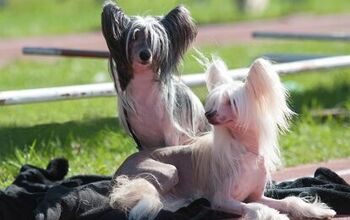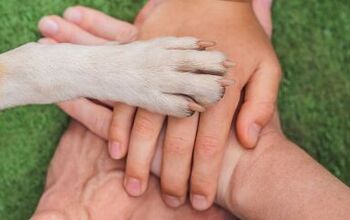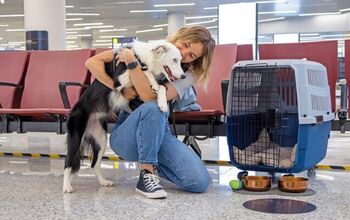Bouvier Des Flandres


About Bouvier Des Flandres
Always an adventurer, the Bouvier des Flandres has rugged good looks and is generally ready and raring to do almost anything. His rough and tumble looks are a mere reflection of his incredible personality. With an inherent work ethic, the Bouvier des Flandres will herd livestock or children. It is essential that he has a job to do or he can become unhappy, bored and destructive.
For an active and assertive family, the Bouvier could be a perfect companion. He is loyal and protective of his family, as he considers them to be his flock. Great care should be taken when strangers are present as Bouviers can become aggressive toward them. To learn more about the Bouvier des Flandres, please continue reading.
Always an adventurer, the Bouvier des Flandres has rugged good looks and is generally ready and raring to do almost anything.
Originating in the Northern region of France and the Flemish sector of Belgium, the Bouvier des Flandres was developed by butchers, farmers and ranchers. They wanted to create a dog that excelled at herding their livestock, particularly cattle hence, gaining the nicknames of koehond (cow dog) and toucheur de boeuf (cattle driver). Although the Bouvier des Flandres is still quite comfortable working on a farm, he is also quite content sleeping on a bed in the suburbs.
It is widely believed that the Bouvier des Flandres all started with local farm dogs. These dogs were bred to a variety of breeds including the Irish Wolfhound, Beaucerons, Brabanters, Griffons and Tibetan Mastiffs. Any or all of these may have helped this breed to develop. After World War I, the breed was nearly wiped out. Fortunately, a veterinarian named Captain Barbry had maintained some Bouviers. His dog, Ch. Nic de Sottegem, is an ancestor to the majority of the Bouvier de Flandres breed we recognize today.
The sheer size and energy level of the Bouvier required him to be fed a large amount of high-quality dry kibble. Because of his activity level, the Bouvier des Flandres should be fed twice daily instead of one large meal. This will help to prevent a condition known as gastric torsion or more commonly, bloat. This is a life threatening problem so it is better to err on the side of caution.
Bouviers are extremely intelligent dogs however; they require a strong authority figure.
Bouviers are extremely intelligent dogs however; they require a strong authority figure. It is essential that a Bouvier des Flandres thoroughly understands his place within the household. Given the chance, he will overtake the home and attempt to rule the roost.
Many Bouviers excel in herding, agility and obedience trials. Their desire to work and do their jobs well make them well-suited for many other things including tracking, search and rescue as well as police work. Training should be started early. It should be done with patience, kindness and assertiveness. Plenty of delectable treats should be used as rewards for doing well.
The Bouvier des Flandres tips the scales between 70 and 100 pounds. They are between 23 ½ and 27 ½ inches tall at the shoulder. This is one of the few breeds where the female should be taller than the male.
Although the Bouvier is an athletic dog, he is also quite content when he is relaxing on the living room sofa with his family. Because he was bred to herd and protect his flock, he will herd his children and protect his family making him a wonderful watchdog. The Bouvier des Flandres is very patient with the kids in his flock. This breed is not overbearingly affectionate however; he will lay down his life to protect his family.
Bouviers need to be kept on a leash or fenced-in area when outside of the home. They have strong chase instincts and will take off after people on bikes, children running and even cars. This could be dangerous for all involved. This breed does have a tendency for aggression toward new people and animals so caution is indicated unless the dog has been well-socialized.
Many large breeds have problems with hip dysplasia and the Bouvier des Flandres is no exception. Concerned breeders diligently are trying to eliminate this problem from their bloodlines but this takes time. Other health concerns include esophageal and pharyngeal muscle degeneration, primary glaucoma, subaortic stenosis, cataracts and thyroid problems. It is important to understand that Bouviers have a high tolerance for pain and could continue on with their daily activities after being injured or ill. Careful inspection of the dog is essential to his well-being.
The average Bouvier des Flandres lives to be between 10 and 12 years of age.
Bouviers are athletes so they do need quite a bit of heavy exercise each and every day. Even if they appear to be in a lazy mood, you will need to get him up off the couch, out into the yard and playing. Without the sufficient exercise, the Bouvier des Flandres can become destructive. Inside of a few hours, you could come home to a house that looked like a hurricane hit it! Vigorous and prudent exercise is a must for this breed. Of course, he should only be exercised on a leash or inside of a secure area.
Although the Bouvier is an athletic dog, he is also quite content when he is relaxing on the living room sofa with his family.
The American Kennel Club states: “Steady, resolute and fearless, the Bouvier des Flandres serves as a family friend and guardian. While this breed is not overly active in the house he does need plenty of exercise, so country and suburban living suits him well.” The Bouvier was first recognized by the AKC in 1931.
Bouviers have a high maintenance coat because it is thick and double-coated. It is also water resistant to protect him from the elements while caring for his flock. The undercoat is soft and fine while the outer coat is coarse and long. This combination gives the breed its recognizable tousled appearance. The coat colors can be salt and pepper, black, fawn or brindle. Many Bouviers have a white spot on the chest.
Grooming is required for the Bouvier des Flandres. A thorough bath and coat trimming should be done at least every two months. They should be brushed every other day to get rid of tangles, burrs, grass, food and other debris the coat collects.
Bouvier puppies should be started in puppy kindergarten classes as soon as they have been vaccinated. Because he has the propensity to overtake his home, proper training is essential for both human and dog to have a happy life together. Socialization is very important to prevent aggression toward strangers later on in life.
Photo credit: Erik Lam/Shutterstock

Amy Tokic, Editor of PetGuide.com, is a passionate animal lover and proud pet parent of Oscar, a Shih Tzu/Chihuahua cross, and Zed, a Japanese Chin. Her love of animals began in kindergarten, when she brought her stuffed dog Snoopy into class with her every day. Now, she writes about her adventures in pet ownership and tirelessly researches products, news and health related issues she can share with other animal enthusiasts. In her free time, Amy loves perusing used book and record stores, obsessing over the latest pet products available and chasing squirrels with wild abandon (a habit attributed to spending too much time with her pooches).
More by Amy Tokic

























